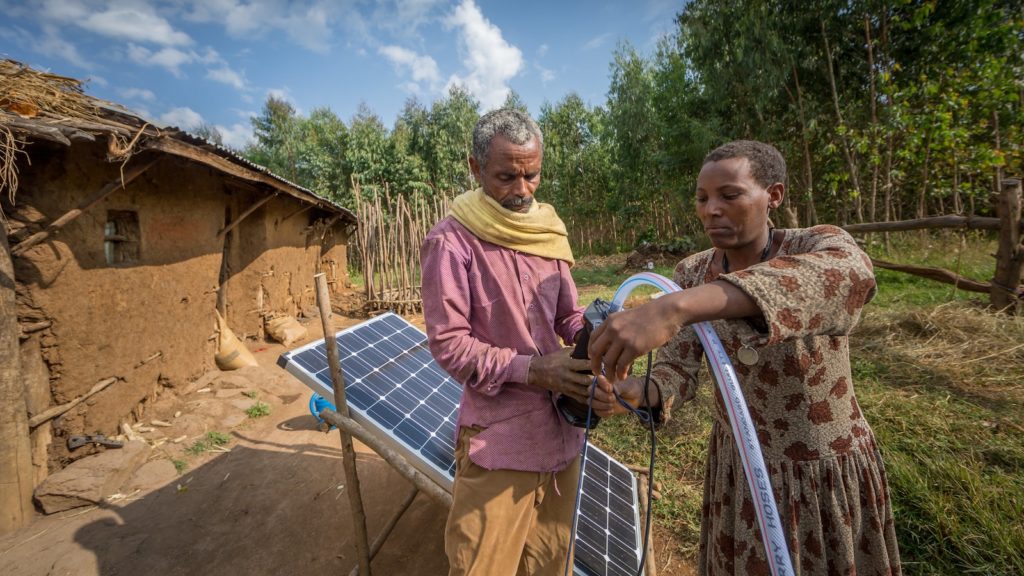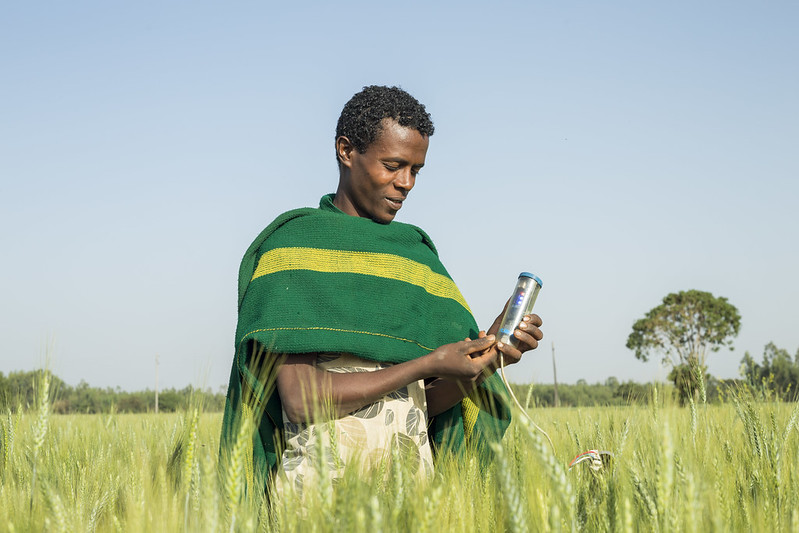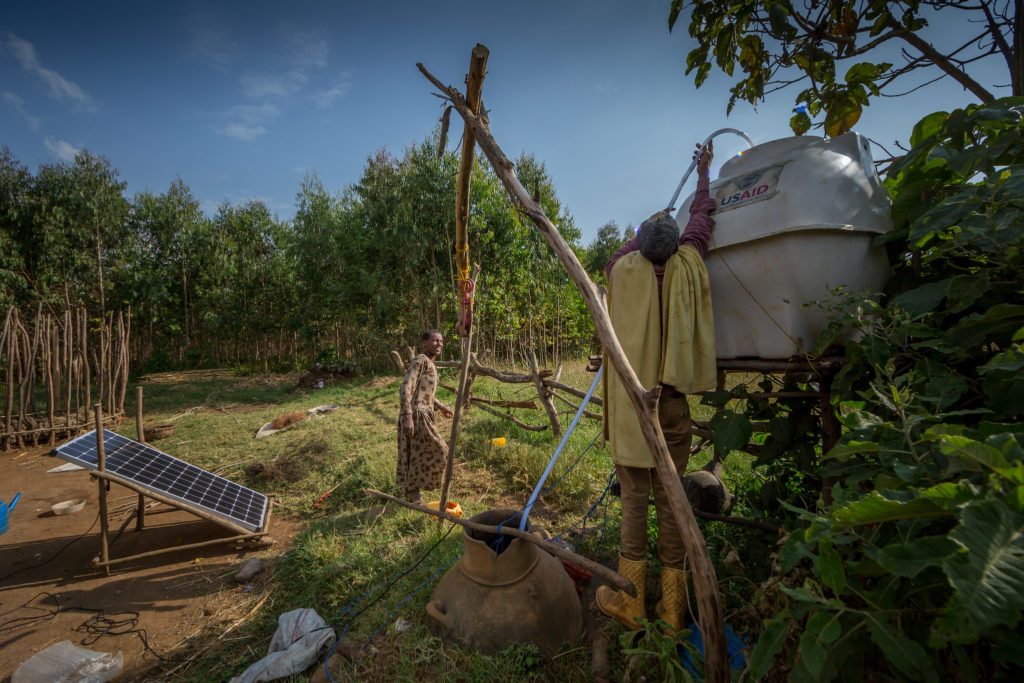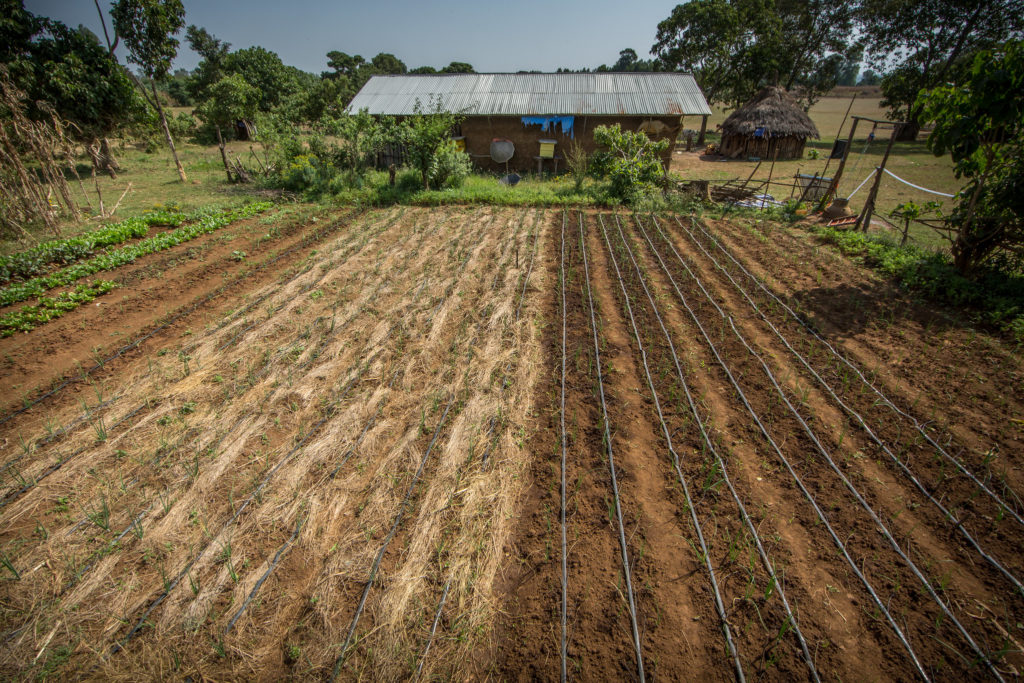Four recent publications from the Feed the Future Innovation Lab for Small Scale Irrigation (ILSSI) investigate how climate change is likely to affect water availability in the future. All four papers present results that suggest needs to put in place measures to adapt to and mitigate risks of plausible climate change.
Gebrekidan Worku, Ermias Teferi, Amare Bantider, Yihun T. Dile. 2019. Observed changes in extremes of daily rainfall and temperature in Jemma subbasin, Upper Blue Nile basin, Ethiopia
ILSSI scientists have been supervising a graduate student from Addis Ababa University who analyzed observed extreme rainfall and temperature in the Jemma subbasin of the Upper Blue Nile basin in Ethiopia. The analysis used data for the period 1981 to 2014. Results showed an increasing trend of annual and summer rainfall and a decreasing trend of spring rainfall in most parts of the subbasin. An increase in rainfall and extreme temperature events was also observed. The study recommends appropriate water management interventions to adapt to and mitigate risks associated with the observed changes in rainfall and temperature.
Gebrekidan Worku, Ermias Teferi, Amare Bantider, Yihun T. Dile. 2020. Statistical bias correction of regional climate model simulations for climate change projection in the Jemma subbasin, Upper Blue Nile Basin of Ethiopia
One of the challenges in climate change studies is selecting the right type of bias correction methods. Biases are systematic errors, either decreases or increases, in actual observations or estimates in climate data. This study, applying several statistical matrices, found that the distribution mapping technique was better for correcting biases than other methods. Distribution mapping is a distribution-based approach that corrects the mean, standard deviation, and extremes and distribution of rainfall and temperature events of climate model outputs. The distribution mapping was applied to bias correct the future (2021–2100) simulation of Regional Climate Models, which showed a decline of rainfall and an increase of temperature as well as of extreme rainfall and temperature events in each of the Intergovernmental Panel for Climate Change (IPCC)’s three scenarios for plausible future greenhouse gas emissions trajectories.
Abeyou Wale Worqlul, Yihun Taddele Dile, Essayas Kaba Ayana, Jaehak Jeong, Anwar Assefa Adem, Thomas Gerik. 2018. Impact of climate change on streamflow hydrology in headwater catchments of the Upper Blue Nile basin, Ethiopia.
In this study, ILSSI researchers assessed the impact of climate change on water availability and variability in two subbasins in the Upper Blue Nile basin of Ethiopia. An emission scenario representing the baseline period (1961–1990) was used to predict future climate and as input to a hydrologic model to estimate the impact of future climate on the flow of water in the two rivers in three future time horizons: 2020–2045, 2045–2070, and 2070–2100. Daily maximum/minimum temperatures are expected to increase throughout the future time horizons. The minimum and maximum temperature will increase by 3.6 °C and 2.4 °C, respectively, toward the end of the 21st century. Consequently, potential evapotranspiration is also expected to increase by 7.8%. The increase in evapotranspiration suggests increased crop water requirement in future crop production, which must be taken into account when planning future irrigation infrastructure. A notable seasonality was found in the rainfall pattern, such that dry season rainfall amounts are likely to increase and wet season rainfall to decrease. The hydrological model indicated that the local hydrology of the study watersheds will be significantly influenced by climate change. Overall, at the end of the century, water flow will increase in both rivers by up to 64% in dry seasons and decrease by 19% in wet seasons.
Abeyou W. Worqlul, Yihun T. Dile, Jaehak Jeong, Zenebe Adimassu, Nicole Lefore, Thomas Gerik, Raghavan Srinivasan, Neville Clarke. 2019. Effect of climate change on land suitability for surface irrigation and irrigation potential of the shallow groundwater in Ghana.
ILSSI researchers applied a GIS-based Multi-Criteria Evaluation (MCE) technique to evaluate the suitability of land for irrigation in Ghana for a baseline period (1990–2010) and future time horizons, namely the 2050s (2041 to 2060) and the 2070s (2061 to 2080). Model results suggest that due to climate change, on average, rainfall will increase by 15 mm in the 2050s and 20 mm in 2070s, compared to the baseline period. Results on average temperature show a consistent increase across most of Ghana, which will increase potential evapotranspiration by 6.0% and 7.6% in the 2050s and 2070s, respectively. As a result of these changes to rainfall and temperatures, 9.5% of the current land area that is suitable for irrigation will become unfavorable for irrigation in 2050s, and may continue to become unfavorable in the 2070s, reducing land suitable for irrigation by 17%.









